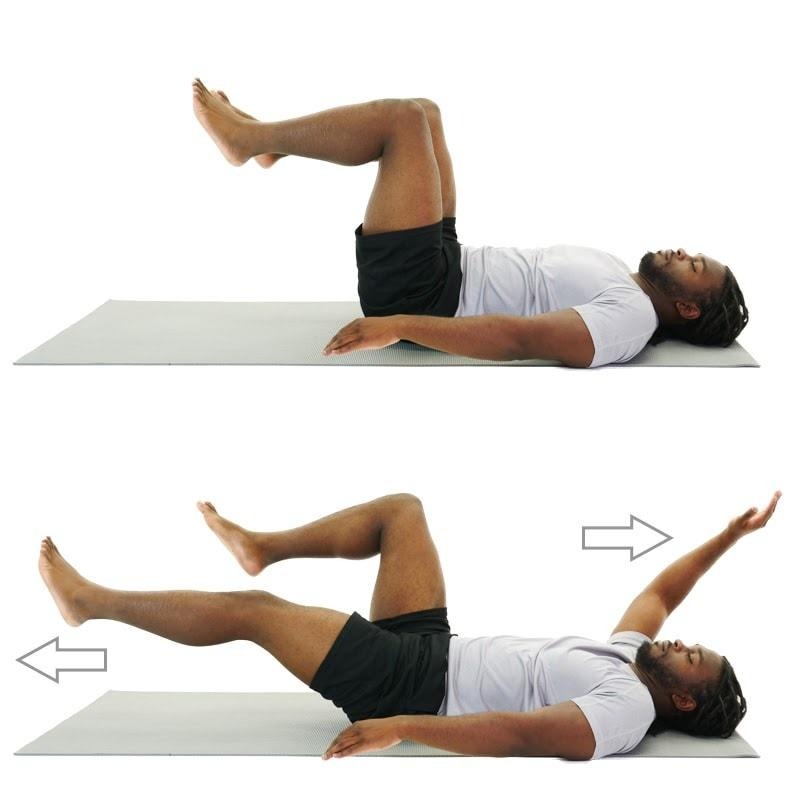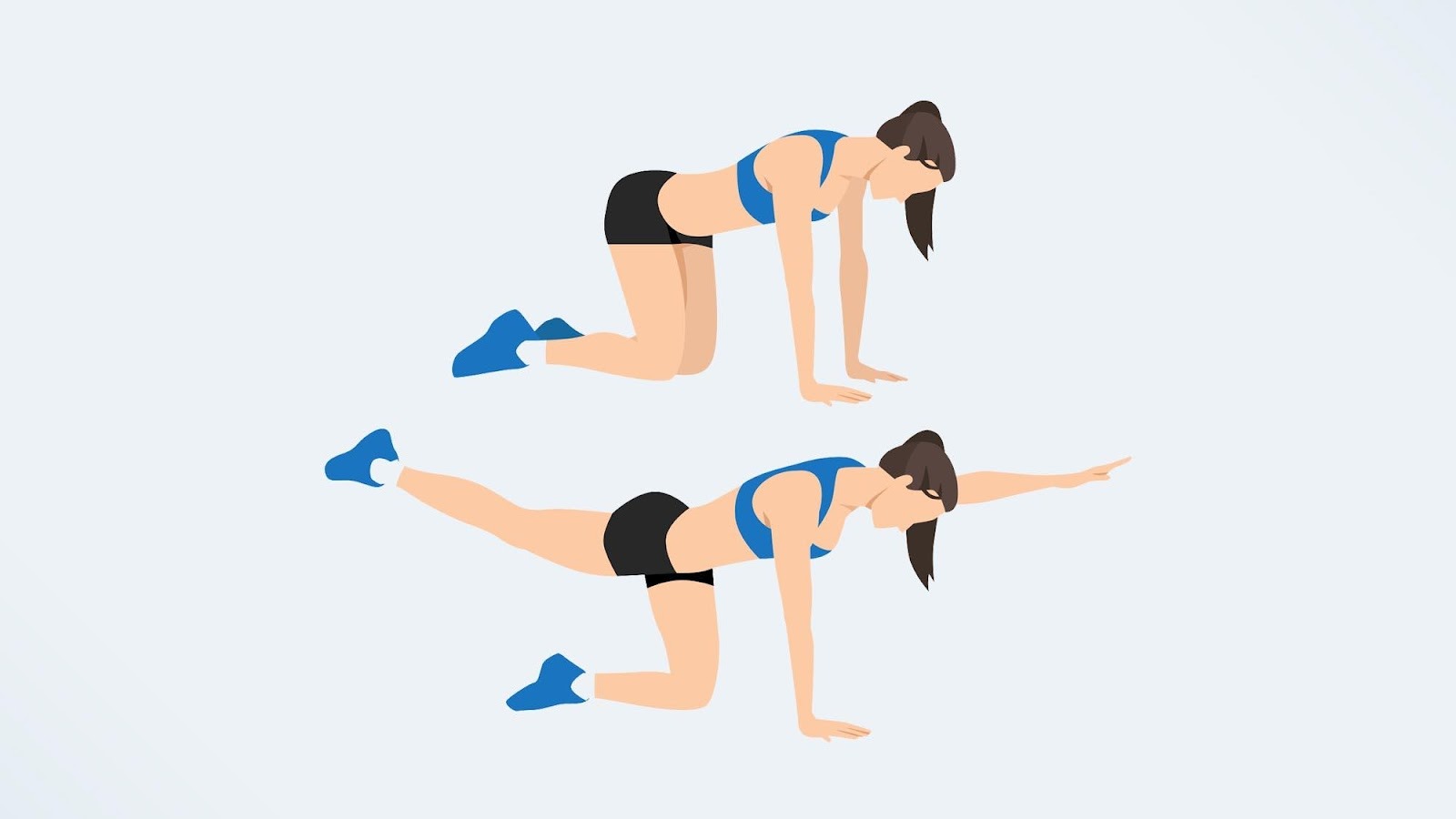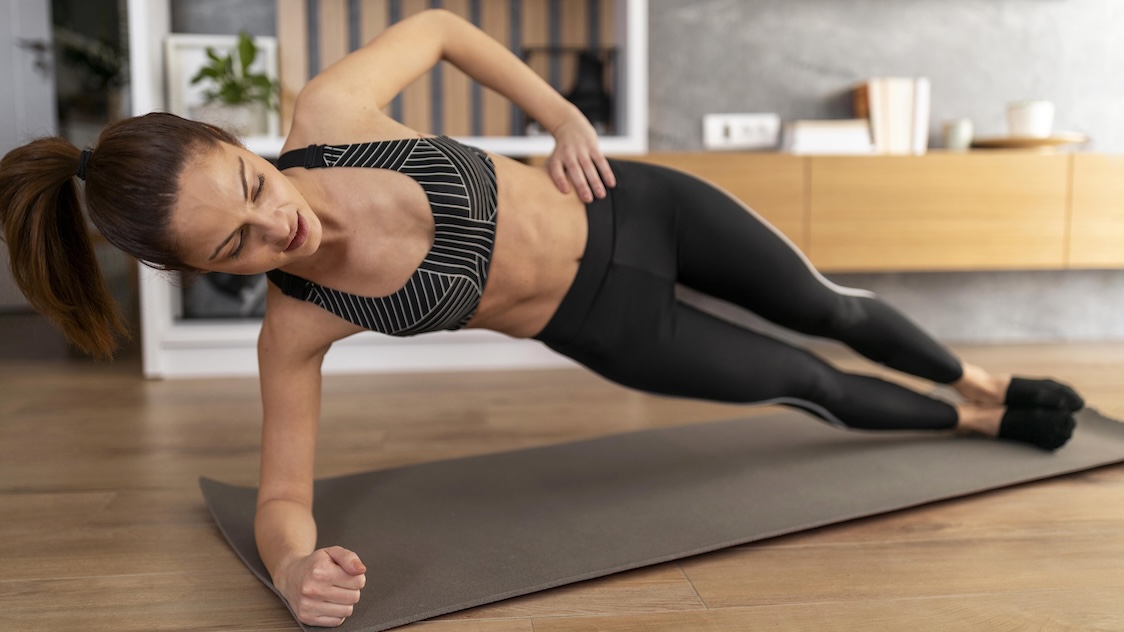Menopause is a completely natural transition for every woman. But with time, it brings unexpected physical changes that require effort to manage. Core strength is one important focus among menopausal women as it can help alleviate low back pain, increase balance and posture, enhance bone health (especially when paired with resistance training!), and improve quality of life.
We are an interdisciplinary clinic that assists women in managing their menopausal transition using a personalized and whole-body care approach. Through specific core strength exercises, women can assist their muscle loss, enhance mobility, prevent falls, and ease symptoms of menopause to improve their quality of life.
The “core” refers to the muscles of your lower back, abdomen, diaphragm, hips, and pelvis. These muscles are crucial for stabilizing the lower back, improving posture, and enhancing mobility – all of which are particularly important during the perimenopausal years, when women typically experience a rapid decline in muscle mass and bone density. Core strength and resistance training can help to offset these changes and provide positive benefits during a challenging physiological period.
A good core endurance program and strength-training program are certainly not only for athletes, but are essential for individuals of all ages.
The benefits of having a strong core are numerous, but many people think that doing a simple “ab workout” is enough to strengthen their core. While helpful, there can be more beneficial and effective approaches!
Menopause is a natural part of life, yet the hormonal changes that occur during this time period can impact strength and musculoskeletal balance.
As a result of lowered estrogen concentration, we begin to see negative alterations to muscles, bones, and connective tissues. These changes are important, as these are the tissues that typically provide strength and stability to our bodies, particularly when we are in motion..
While estrogen is, of course, important for reproductive health, it also has a strong influence on muscle strength, bone density, and overall balance in the system. In particular, we also see a decrease in spatial awareness and ability to balance throughout these years – both notable risk factors for injury, particularly with aging.
The encouraging news! With the help of targeted exercises, it is possible to counteract some of these changes in your body.

Menopause can lead to weakening of the core muscles, but with the help of a targeted exercise program these changes can be minimized and offset altogether.
Here are the simple movements that can help build core strength, improve your posture, and initiate the process of improving hormonal balance, while also contributing to a reduction in fall risks.

This exercise promotes your overall posture, improves flexibility, and spinal mobility.
Begin by standing tall with your feet hip-width apart, arms relaxed by your sides, and shoulders down.
Take a deep breath in and as you exhale, slowly tuck your chin toward your chest and begin to roll your spine down, letting your arms hang naturally toward the floor. Keep your knees slightly soft and engage your core to control the movement.
Pause when you reach a comfortable stretch at the bottom, allowing your head and neck to relax.
Inhale deeply, then exhale as you slowly roll back up. Repeat this movement 3–5 times.

Lie on your back, having your knees bent, and your feet a hip-width apart.
Push up using heels and straighten your shoulders to knees by lifting your hips up to the ceiling. Hold for a few breaths, and then slowly return your hips to the floor. Repeat for several repetitions. Throughout this exercise, you should notice your glutes feel quite active, and your core muscles are also working.

Lie on your back with arms reaching up to the sky, legs up, and knees bent. Slowly lower one arm and the opposite leg toward the floor while keeping your core engaged and lower back pressed into the mat. Return to the start, then switch sides.

Start on both hands and knees in a tabletop position. Stretch your right arm forward and left leg back, keeping your hips level and core tight.
Hold for a breath, then return to the start and switch sides. Keep your gaze slightly forward to maintain a neutral spine.

Lie on your side supporting on your down-side forearm and with your legs stacked on top of one another. Raise your hips away from the ground so that you are lying in a straight line.
Hold, breathing steadily. NOTE: An alternative option for regression would be to bend the knees and perform the exercise from this position.

Stand tall with feet hip-width apart. Lift one knee toward your chest as you gently rotate your upper body across the lifted leg.
Return to the start and repeat on the other side.
The above exercises are simple, require minimal equipment, and work to combine balance, coordination, and rotational strength. They represent a safe and effective starting point for any woman in their menopausal years.

Now that you have some examples of helpful exercises, let’s see how you can weave them into your schedule. The key is to integrate them gradually and consistently, so that we can begin to improve our weekly exercise – a critical ingredient to the successful management of some menopausal symptoms.
In general, in Canada, about 57% of women aged 45 to 50 do not meet the recommendations for physical activity. This inactivity is linked to higher risks of chronic diseases and increased mortality. According to the NHS, people in this age range “should aim to get at least 30 minutes of exercise done, [to] improve their health and reduce heart risk”.
We recommend starting with two simple, core-based sessions a week. This gives your muscles time to rest between exercises and is not a big commitment. The sessions should be brief, between 15-20 minutes, with 5-10 minutes warming up (some mild activity such as marching on the spot or light arm circles). Ideally, we can perform these right at home with minimal equipment. Just find a nice, comfortable area of the house and get to it!
During the first two months, aim for 2 sets of 10–15 reps per exercise, focusing on simple, easy-to-perform movements. As with any exercise program, it is important to perform exercises safely with proper form and technique before increasing the intensity.
While it is occasionally OK to exercise with discomfort, this is a useful barometer to use for measuring success. If you find that you are having difficulty overcoming your discomfort, it is always best to consult a qualified healthcare practitioner.
As you get more confident and comfortable with your new routine, there are many ways to add extra challenge: you can gradually add more time, either by adding some extra repetitions, or by maintaining a posture a little longer or you could begin to experiment with more challenging variations of these exercises.
Progress takes time. As you get stronger, your body will naturally adapt, so you’ll need to increase the resistance to keep improving gradually.
The trick is to select modifications or weights that are comfortable, supportive, and effective for your current level of ability.
The menopausal journey is unique to every woman! As such, every woman experiences things in a different way. Part of this journey is learning to listen to your body and its unique needs. Thus, it is essential to adjust the intensity of your workouts to suit your comfort level.
The best workout is the one that you can commit to and be consistent! It is very important to be realistic and comfortable with your time commitments and physical limitations – we want to start a journey that is sustainable and enjoyable after all! The easiest trick is to combine your daily exercises with activities you already enjoy, such as adding them to the end of your morning walk or before relaxing with an evening bath.
It is important to develop a routine that makes these movements a part of your daily life. Especially for those new to exercise (or returning after an extended break),it is best to start small with something accessible to you, such as a brisk morning walk, and gradually increase your activity over time.
Long-term Fitness Tips for Menopausal Women
Achieving long-term fitness during midlife extends beyond focusing solely on core workouts. These are some suggestions we find ourselves dishing out time and again:
Read through these to stay safe and avoid these mistakes:
When most women consider core exercises, they consider crunches or sit-ups. These movements are primarily surface muscle-directed and may cause undue strain on the spine and pelvic floor in the untrained individual.
In particular, for menopausal women, improper exercise prescription can cause low back pain or even aggravate pelvic floor symptoms. Rather, we recommend safer movement options, such as bridges, planks, and bird dogs, which engage the deeper abdominal and back muscles.
The pelvic floor and core function together as a supportive unit. Focusing only on abdominal strength while neglecting pelvic floor health can increase the risk of problems such as incontinence and pelvic heaviness. These symptoms are commonly viewed as a sign of aging… they are not! Suppose you are a female and have a history of pelvic floor symptoms. In that case, we highly recommend a proper assessment with a pelvic floor physiotherapist (or a referral to a qualified physician as required).
Avoid holding your breath while doing core exercises. It increases pressure in your abdomen and pelvic floor, which can cause unnecessary strain. Instead, focus on breathing steadily and naturally throughout each movement.
The Final Note
Keeping your core strong during menopause is a great achievement. It’s about preserving the independence, confidence, and quality of life that you deserve while working to minimize disruption to your body. A simple, targeted core routine can help women stay strong and resilient in all phases of their lives.
By incorporating a few focused core exercises and balanced nutrition into your daily schedule, you’ll support muscle maintenance, protect bone health, and even help to keep your weight in check.
Remember that you are not alone in fighting menopause! Make movement a daily habit and give yourself the gift of strength and vitality.
Fill out the contact form below for general inquiries, or give us a call at 705-326-9977 — we’re happy to help.